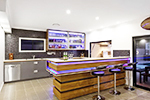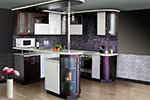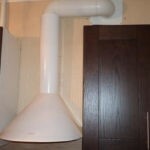Bar counter - an excellent functional design solution for the interiors of modern apartments and houses. This piece of furniture allows you to zone the space, can be used as an additional storage system, a stylish and effective decorative design. Today's HouseChief review is dedicated to the role and types of the bar counter in the kitchen, photos and expert recommendations will help you choose the right design for your apartment or house.
Read in the article
- 1 A bit of history
- 2 What materials are used for the manufacture of bar counters
- 2.1 Natural wood
- 2.2 Chipboard
- 2.3 MDF
- 2.4 Natural and artificial stone
- 2.5 Metal, glass, plastic and drywall
- 3 Standard dimensions of tall kitchen tables
- 4 Varieties of bar tables for the kitchen by design
- 4.1 Classic bar kitchen counters and multi-level designs
- 4.2 Island and corner bar counters in the apartment
- 4.3 Folding and swivel bar counters for home
- 4.4 Folding and retractable bar counters
- 4.5 Mini bar counters and mobile structures
- 5 Use of space above and below the counter
- 6 How to choose a bar counter
- 7 How to choose a bar stool for the kitchen
- 8 Which bar table and chairs to buy for the kitchen: expert advice
- 9 Ideas for the location of bar counters in the interior of the kitchen
- 9.1 Bar counter between kitchen and living room with photo examples
- 9.2 Design of corner kitchens with a bar counter with photos of interiors
- 9.3 Bar counter in the kitchen by the window with a photo in the interior
- 9.4 Bar counter in the kitchen against the wall
- 9.5 Bar counter in a small kitchen
- 10 A few words in conclusion
A bit of history
The first bar can be called a counter in the prototypes of catering in Ancient Rome. In a structure called thermopoly, vessels for heating food, ovens and niches for kitchen utensils were mounted. Times changed, and medieval taverns and taverns replaced the ancient Roman "public catering". Instead of stone counters, wooden structures appeared.
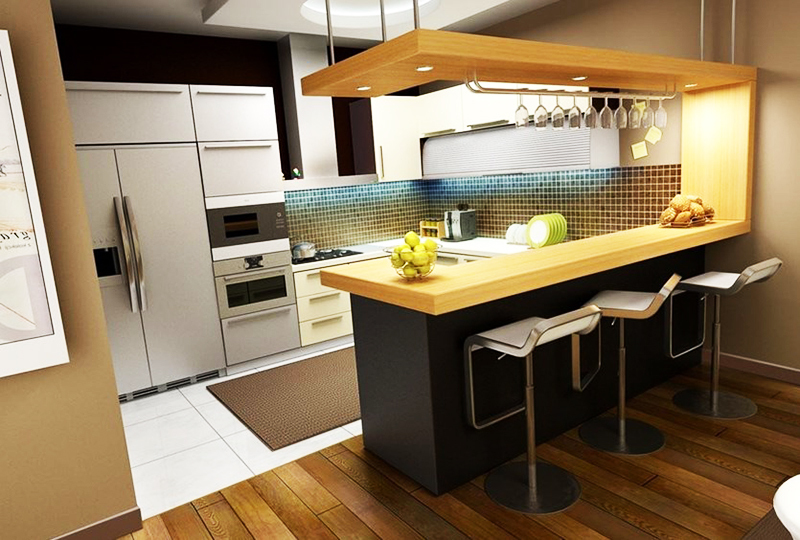
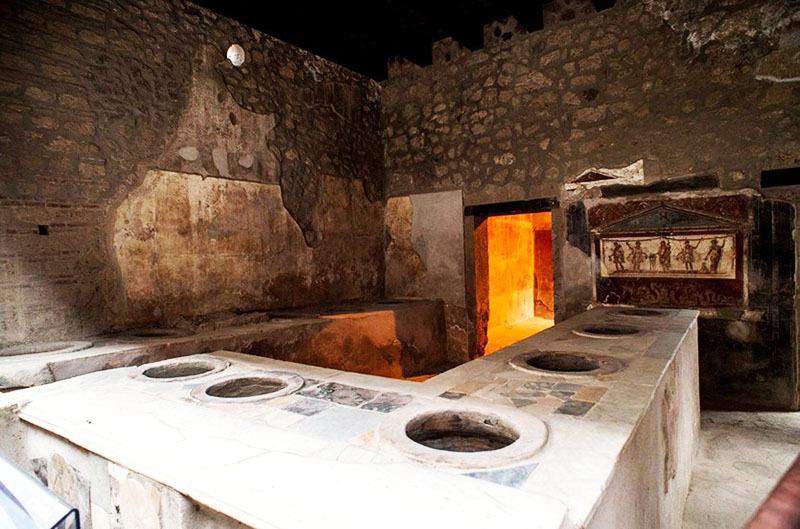
Despite such a long history of the existence of the bar counter, its appearance, according to the main version, is associated with the development of drinking establishments (saloons) in North America in the middle of the 18th century. The wooden structure served to divide the space into a work area for the bartender and a common room. The counter separated the alcohol display from the visitors, and there were often weapons under the counter to protect the establishment. Over time, the structure was supplemented with high chairs or stools, and at the counter you could not only drink, but also have a snack.
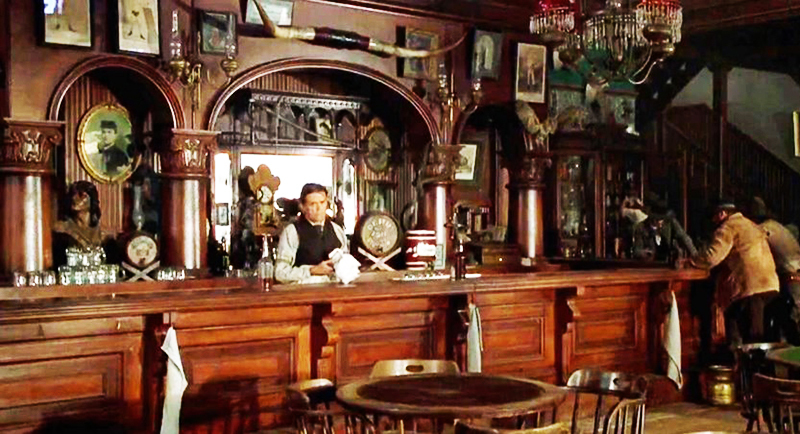
Gradually, functional and comfortable bar counters migrated from bars to the interiors of residential apartments. This piece of furniture has become especially popular when arranging studios. The kitchen counter bears little resemblance to the classic designs used in bars and restaurants, but the functionality remains unchanged.
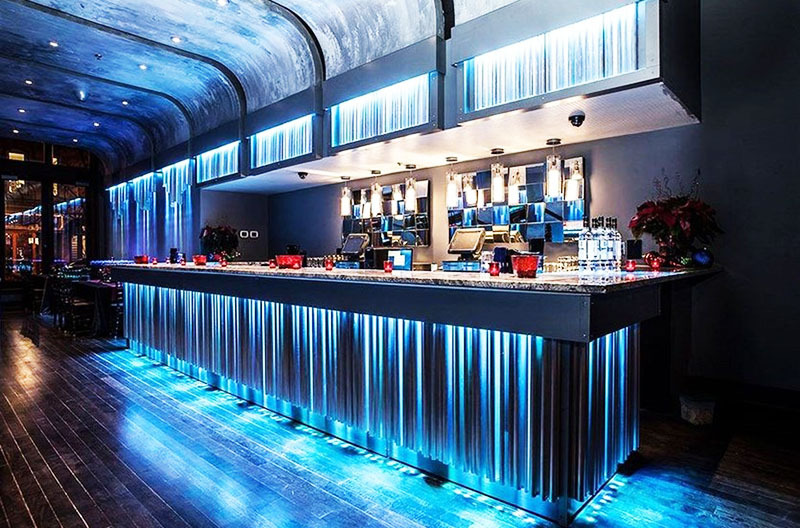
What materials are used for the manufacture of bar counters
Classic bar counters were originally made from wood. Technological progress has significantly expanded the range of materials for their production, which made it possible to create designs practically for any interior style.
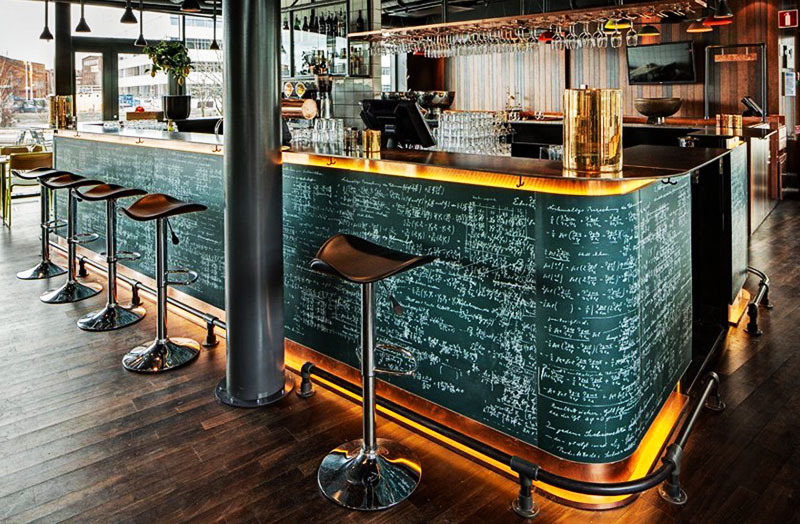
Natural wood
Natural wood is a traditional material for furniture production. The wood has a beautiful texture, it can be given different colors. This is an environmentally friendly material that is easy to process and repair, and with proper care, it is durable. A bar counter made of natural wood looks very impressive, especially in interiors made in a classic style. Some models are decorated with carved elements, which turns them into real pieces of furniture art.
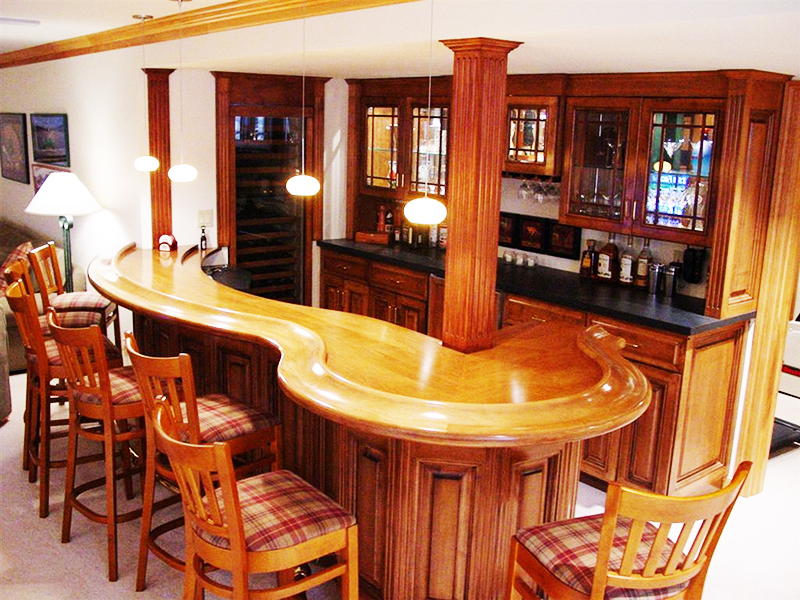
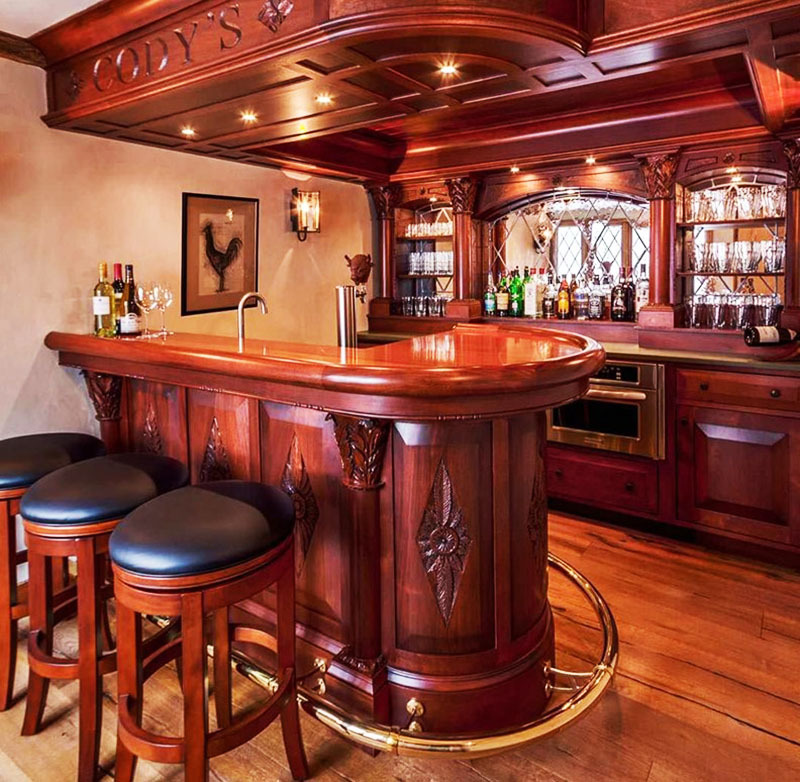
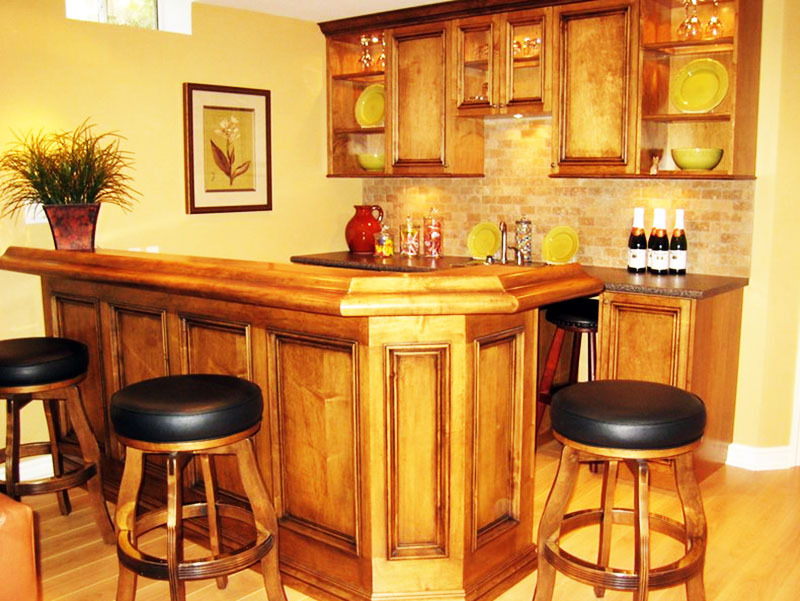
Chipboard
This material is widely used for the manufacture of budget-class furniture. It does not differ in durability and moisture resistance, but it has a rich color palette and a large selection of textures. Chipboard It is mainly used for the manufacture of furniture frames, and its popularity is due to its low price.
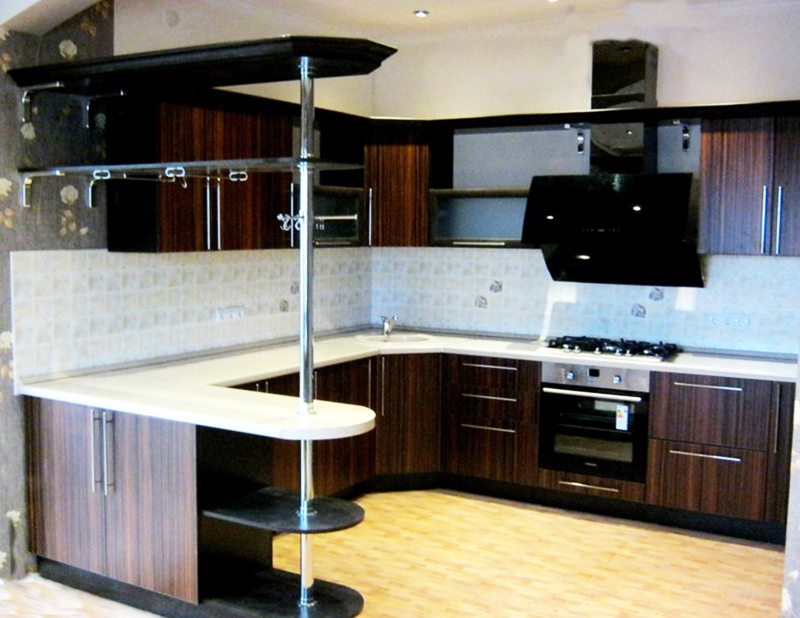
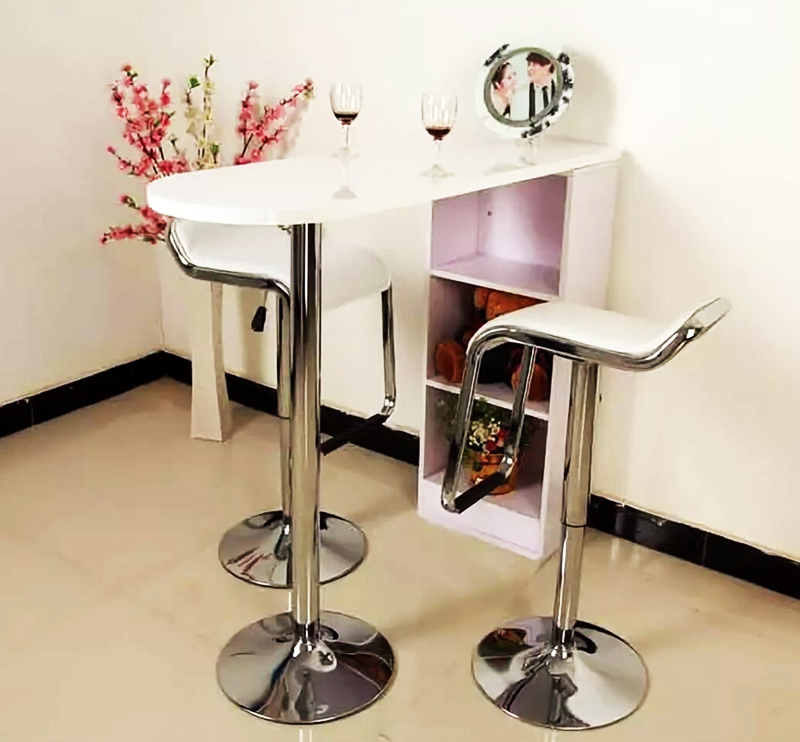
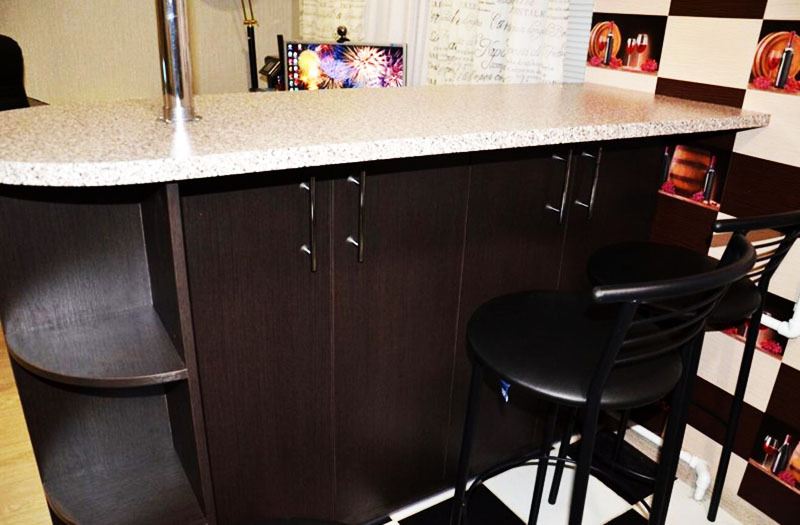
MDF
MDF, unlike laminated chipboard, has a high density and strength. Imitation of natural wood is achieved through a protective and decorative layer of PVC film. This material is resistant to moisture and temperature extremes. MDF board can be coated with acrylic, which makes it stronger and more durable. The material is used both for the manufacture of the frame and for the facades.
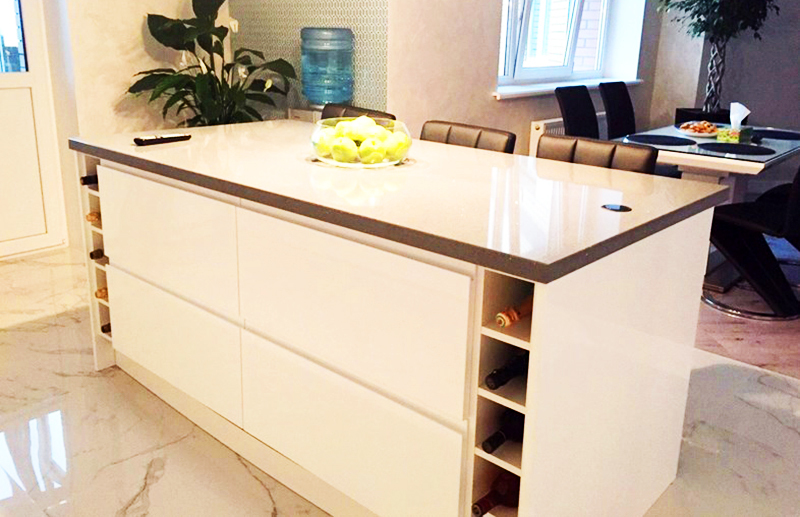
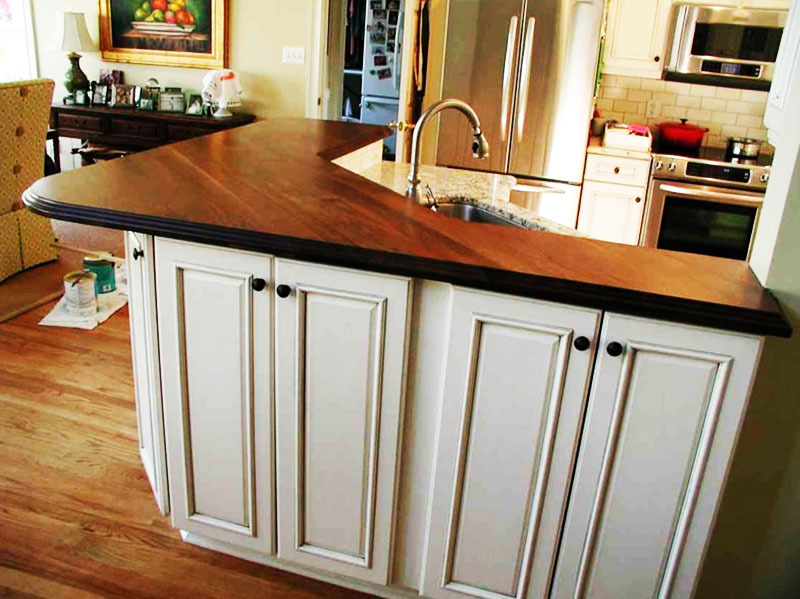
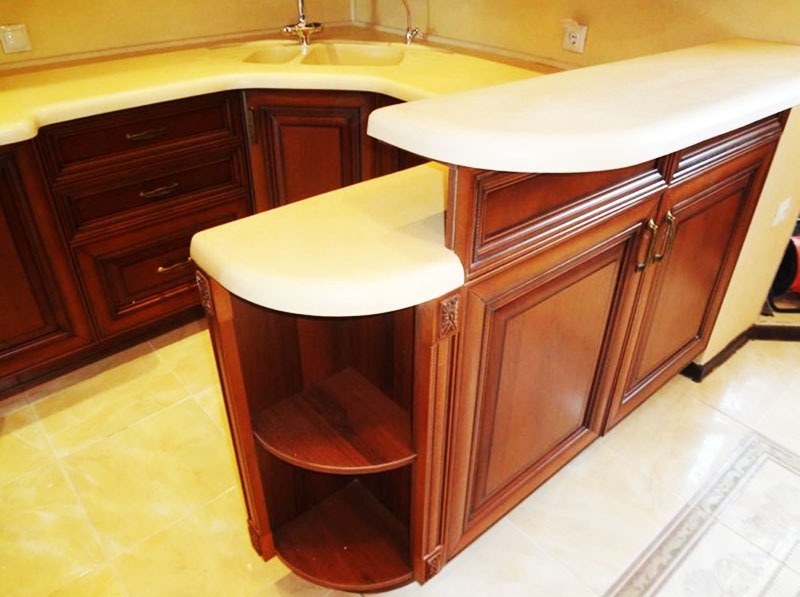
Natural and artificial stone
For the manufacture of bar counters, brick, artificial and natural stone can be used. From these materials, bases or only countertops are created. Stone or brick bar counters are usually installed in private houses, as they look quite massive and would be out of place in a city apartment.
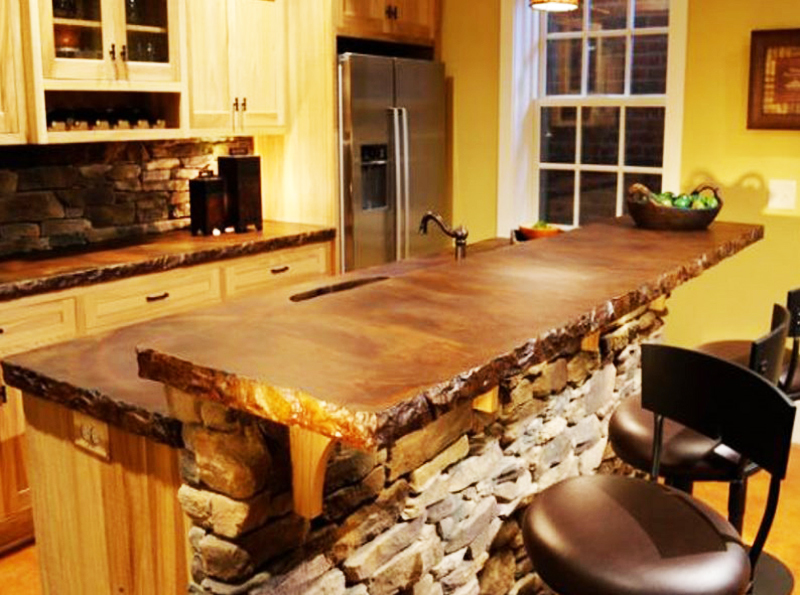
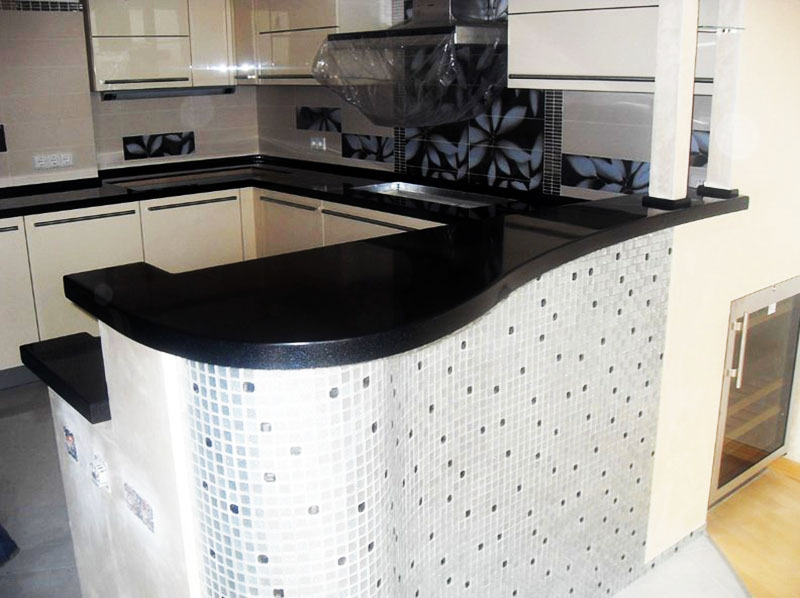
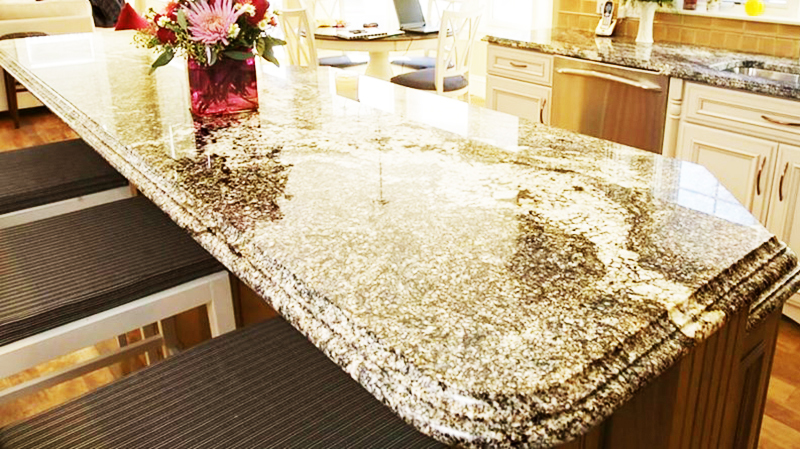
Metal, glass, plastic and drywall
Bar counters from impact resistant glass - a great option for interiors in style high tech, loft, techno or art deco. This material has a long service life and does not clutter up the space, regardless of the size of the structure. Glass can be transparent, frosted, tinted, painted or drawn using sandblasting machine. The rack is often equipped with LED lighting.
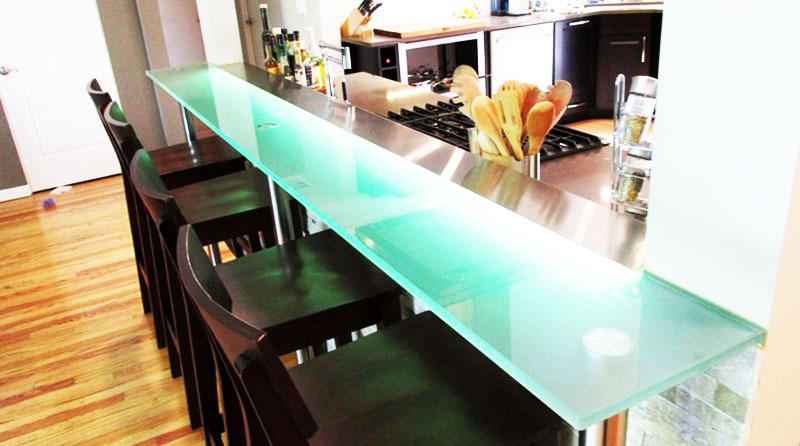
Plasterboard construction can perform a purely decorative and delimiting function. This is due to the low strength characteristics. In addition, bar counters made of this material can only be stationary, but the structure can be given almost any configuration.
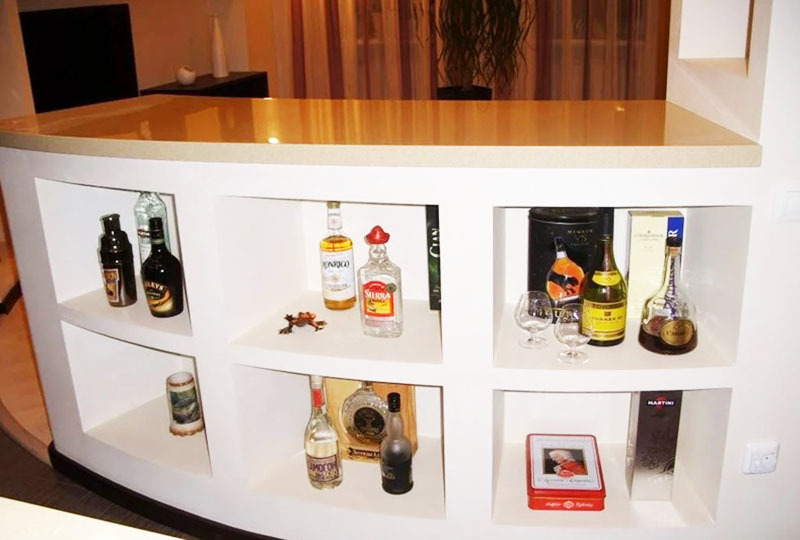
Plastic is used only for the manufacture of countertops. This is an excellent material that is resistant to moisture, temperature extremes and household chemicals. Finishing with plastic panels significantly increases the service life of the structure.

Completely metal bar counters are almost never found. Supports that support the table top are most often made from aluminum, steel and brass. It is a natural choice, as the material is highly durable, good looking and able to withstand significant loads.
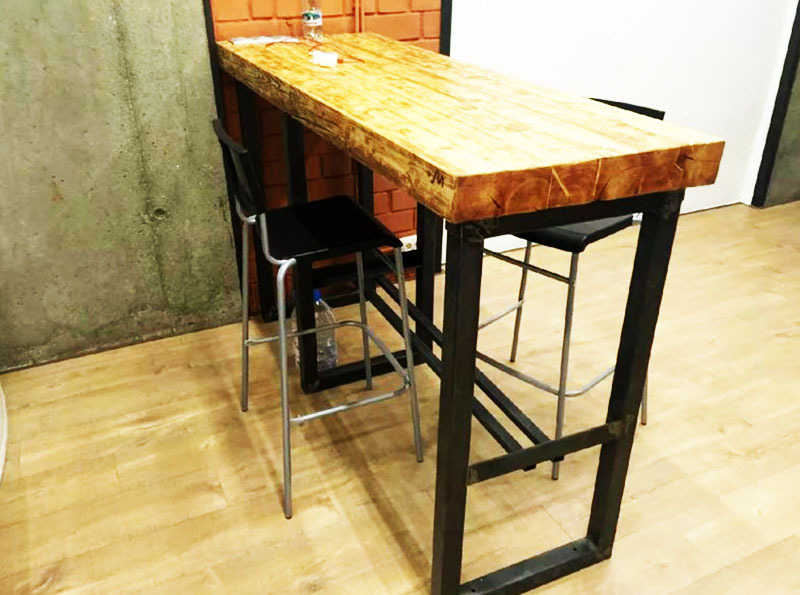
Standard dimensions of tall kitchen tables
Modern furniture manufacturers usually produce bar counters in standard sizes. The height of the structures ranges from 800-1300 mm, but the average distance from the floor to the top edge of the table top is 1150 mm. The length is selected in accordance with the number of people who will use the structure daily. The standard value for the home model is 1200 mm. Since the comfortable space for one person is 600 mm, the countertops with dimensions of 1200 × 600 mm will be enough to accommodate four eaters at the same time.
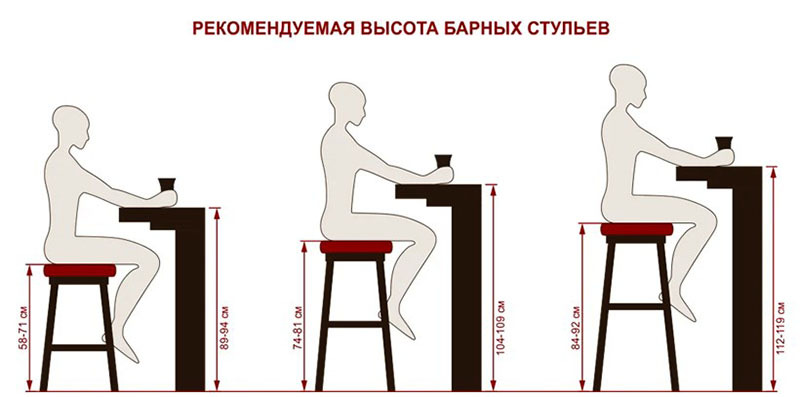
Also, the dimensions of the bar counter depend on the purpose and configuration of the structure. So, for example, if it is part of a kitchen unit, then the height should not exceed 850 mm. If the stand performs a dividing function between the dining area and the living room, then this value is at least 1000 mm.
In the case of a multi-level structure, the countertop from the kitchen side should not be higher than the headset level, and in the living room area - 100-200 mm higher. Bar stools or stools are installed on the higher side of the structure.
Varieties of bar tables for the kitchen by design
There are many types of bar counters, differing from each other not only in design, size and materials of manufacture, but also in design and location. They can have a simple configuration, be open, closed, stationary, mobile, and in some cases even replace half kitchen set.
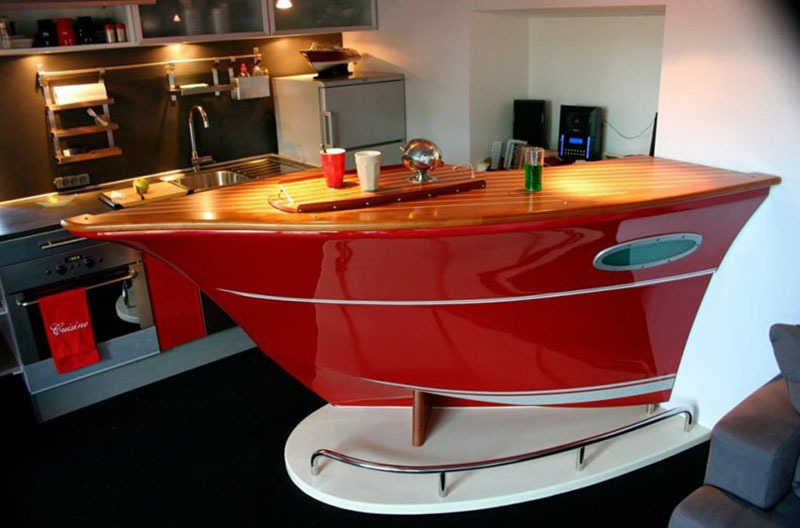
Classic bar kitchen counters and multi-level designs
Classic bar counters are an independent piece of furniture, independent from the rest of the headset. Such models are preferable for spacious rooms, since they occupy the central part of the kitchen. The stand in classic design can be located anywhere, but at the same time it does not come into contact with the wall.
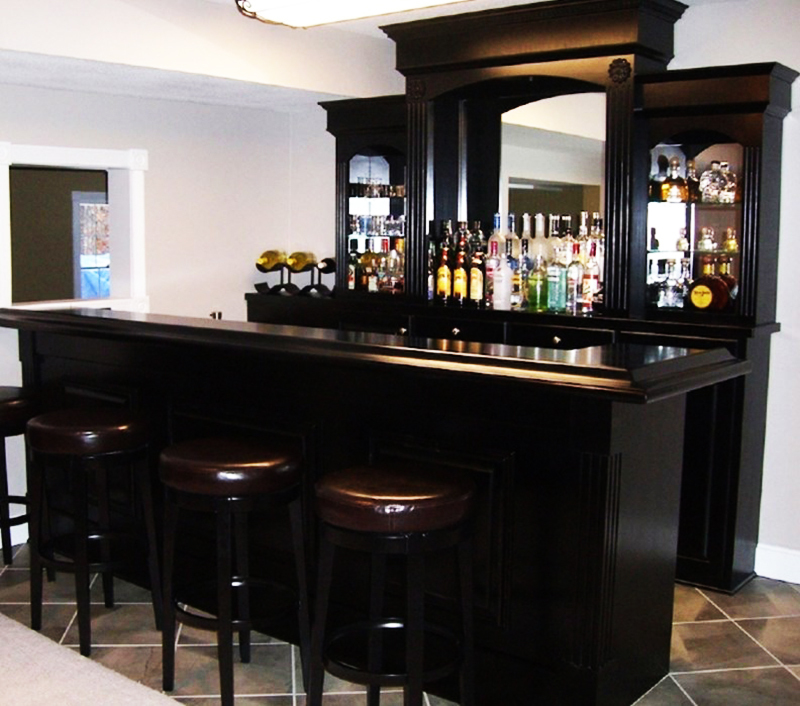
Recently, two-level structures have become increasingly popular. They can be stationary and dynamic. In the second version, the taller countertop is pulled out or hidden in a special niche. In stationary models, the lower level is used for cooking, drinks, etc., and the upper level is used as a dining table. Two-level structures are mainly installed in studios or kitchens, combined with a living room.
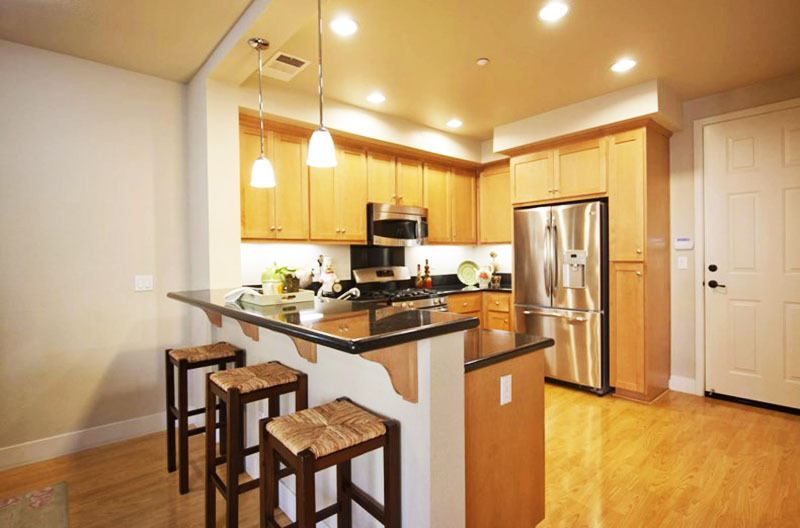
Island and corner bar counters in the apartment
The island bar counter is a free-standing structure of a semicircular, U- or L-shaped shape. This is a good option for spacious kitchens or studio apartments. The "island" is made in the same style as the entire kitchen set. The design often provides for open and closed sections, drawers, and also equipping with a mini-refrigerator.
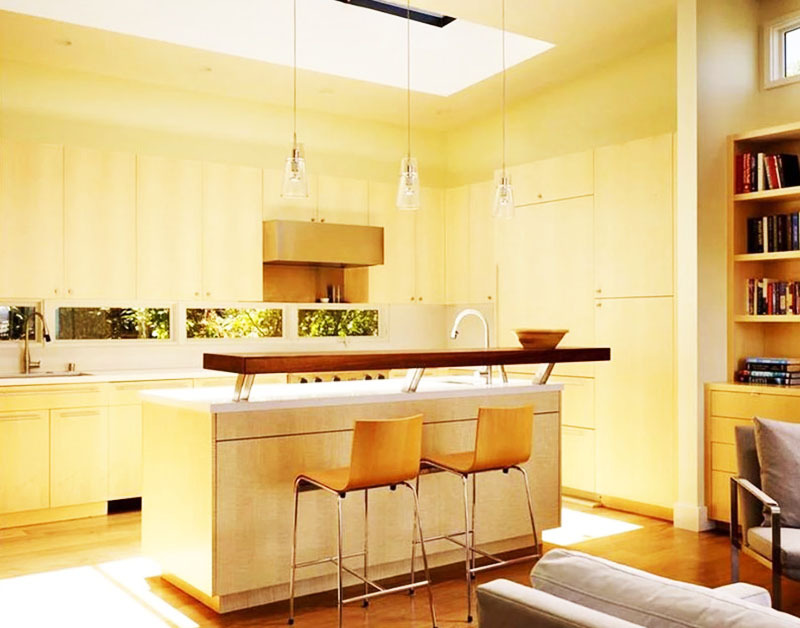
In most cases, home bar counters are located perpendicular or parallel to the main line of the kitchen set. L-shaped placement of the structure is the optimal solution for small kitchens. This option increases the functionality of the headset work surface, since the corner bar is a continuation of the main table top. It can also be used as a dining table.
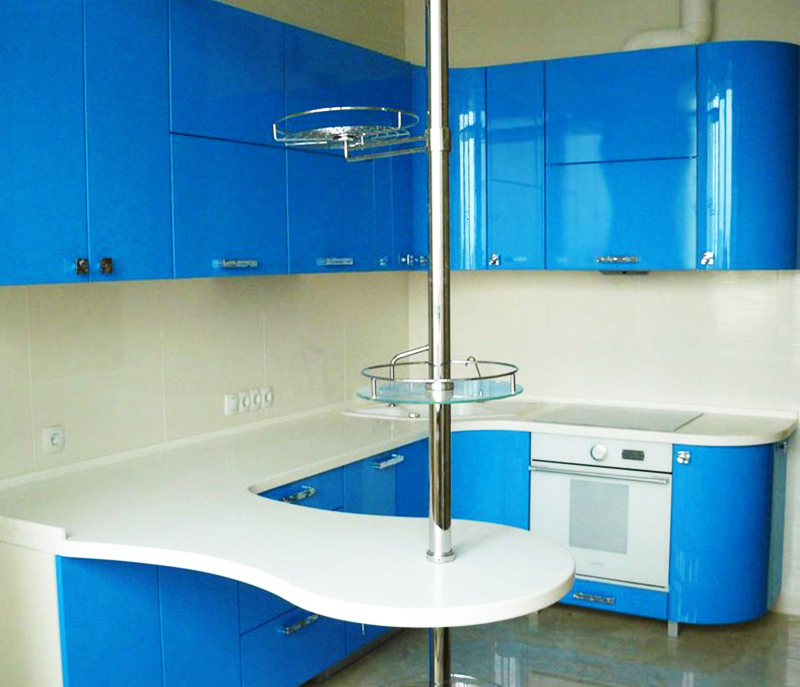
Folding and swivel bar counters for home
Particularly noteworthy are the transforming models of bar counters (folding, swivel, sliding and folding). The most convenient for small kitchens and large families are constructions-transformers. Their peculiarity lies in the fact that when folded, they look like a small pedestal. The working surface can be increased by raising the table top, which then rests on folding supports or a special mechanism.
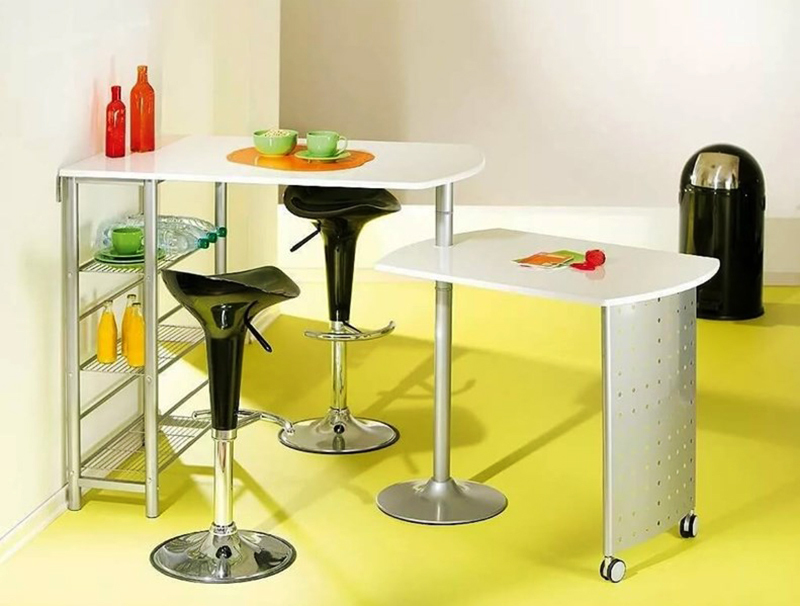
An interesting version of the bar counter, which is made with the individual design of the kitchen. In this case, the additional worktop is hidden under the work surface of the kitchen set using a special mechanism. With a light movement, you can, if necessary, organize a full-fledged dining area. This design saves space, but requires accurate calculations and additional costs.
Folding and retractable bar counters
Folding structures are an excellent solution for small spaces. This is one of the simplest and most budgetary options that is available for self-production and can be implemented not only in the kitchen, but also on the loggia. When folded down, the folding stand allows you to significantly save free space, and the organization of the dining area is quick and easy.
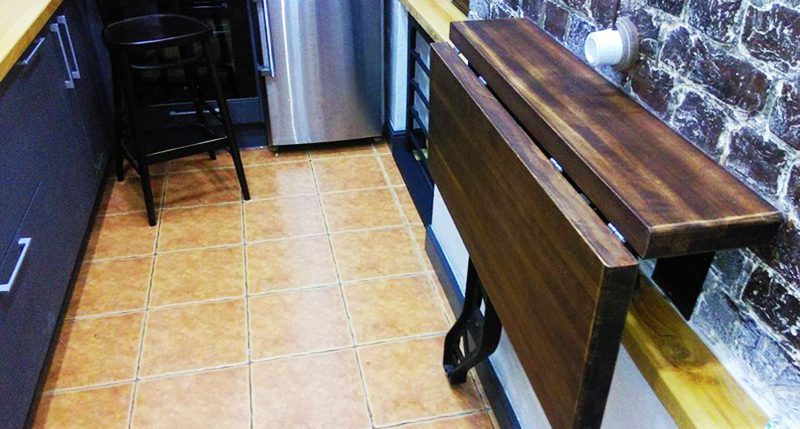
Extendable tables, swivel and folding structures, this is a convenient option for small spaces. They are placed under the table top, slide out using a special mechanism and have 1-2 supports. The bar counter is made of the same material as the work surface of the kitchen set.
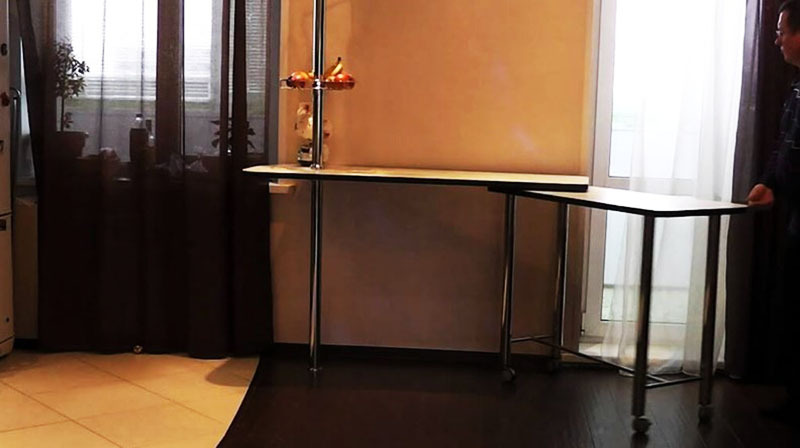
Mini bar counters and mobile structures
Mini racks and movable structures are mobile and small in size, making them an excellent option for small spaces and studio apartments. These are models no more than a meter long, equipped with casters. When choosing mobile structures, you need to pay attention to their stability. Some models of mini bar counters look like an old suitcase set vertically.
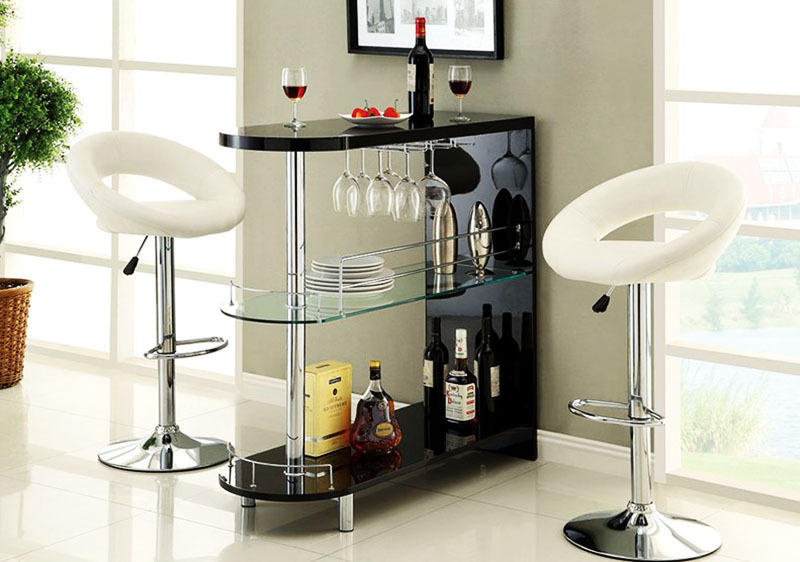

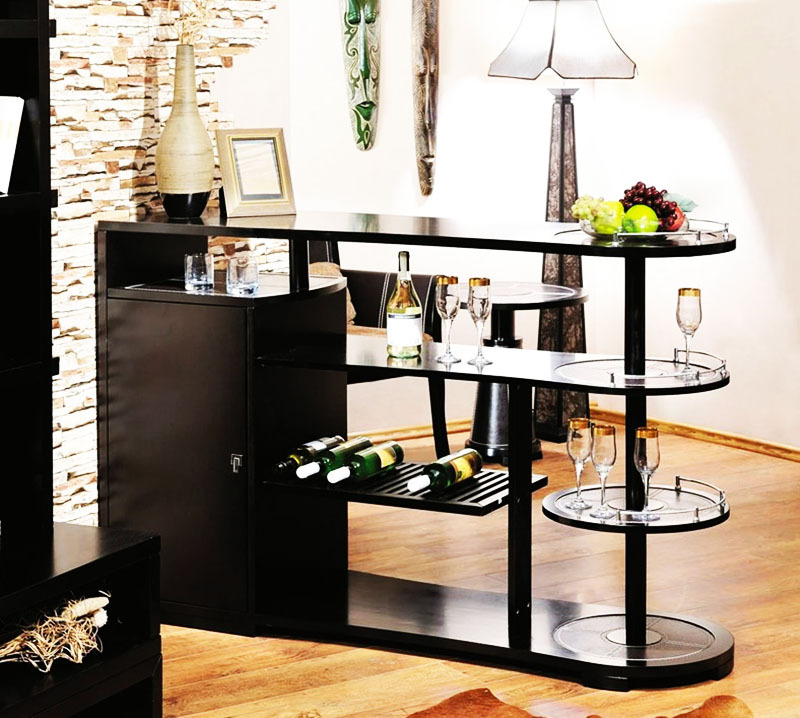
Related article:
Bar counter: do it yourself or buy a ready-made structure, why do you need such furniture, varieties, materials for manufacturing, standard sizes, how to make a bar counter from different materials, the cost of finished structures.
Use of space above and below the counter
Interior and furniture designers suggest more rational use of the free space under the bar and directly above it. This can be done with modern storage systems and accessories. Pull-out food baskets, open and closed shelves can be placed under the worktop. In an island two-level structure, set sink, mini fridge, oven or a small flush-mounted stove.
A steel pipe can be installed above the counter to connect the work surface to the ceiling. Baskets for fruits, cups, as well as special glass holders can be attached to it. Also, the bar counter can be equipped with railing system and decorative lighting. All of the above devices can significantly increase the functionality of the structure.
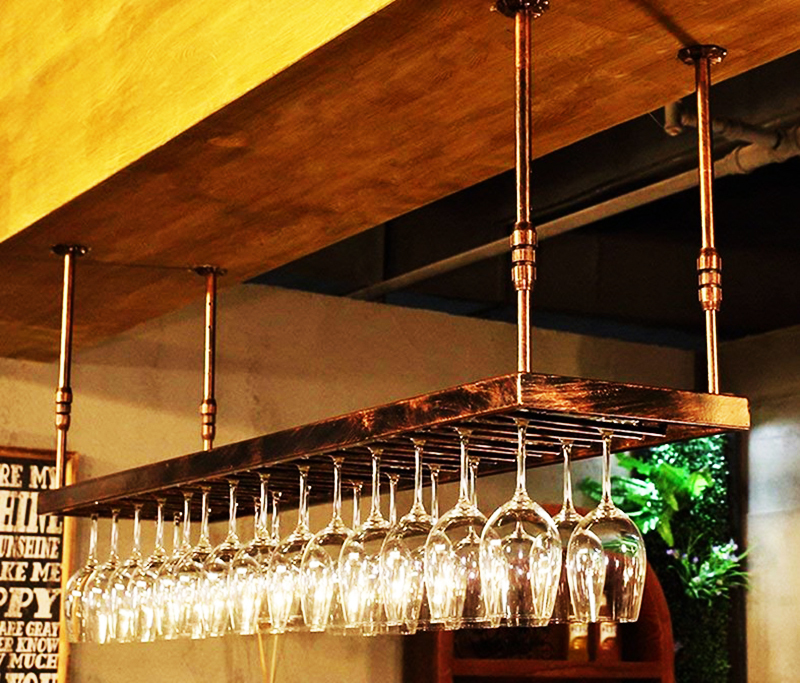
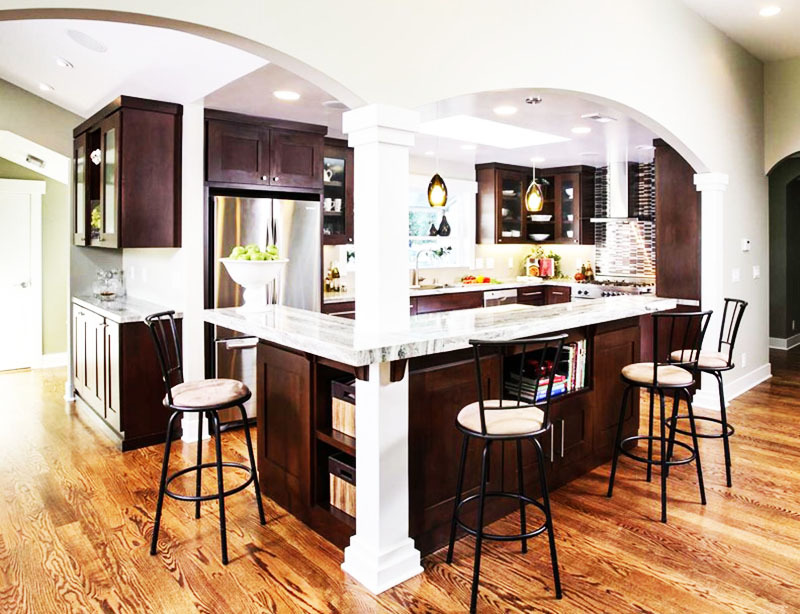
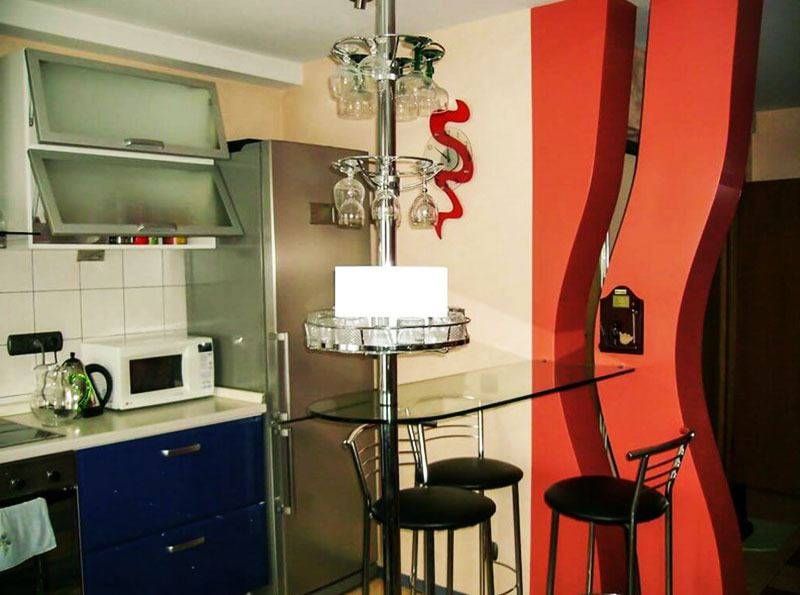
How to choose a bar counter
There are several important factors to consider when choosing a bar counter for your home kitchen. First, they take into account the stylistic solution of the interior and, in accordance with it, select a suitable design. Secondly, the dimensions of the kitchen are taken into account, since it is impractical, for example, to try to place an island bar in a small room. The configuration, dimensions of the bar table and the material from which it is made are also important. Agree, a wooden structure with carved decor in a high-tech room would be inappropriate. Length, width and height are selected in accordance with the number of family members and their average height. By the way, the difference in height and height of the structure can be compensated for with a bar stool or stool.
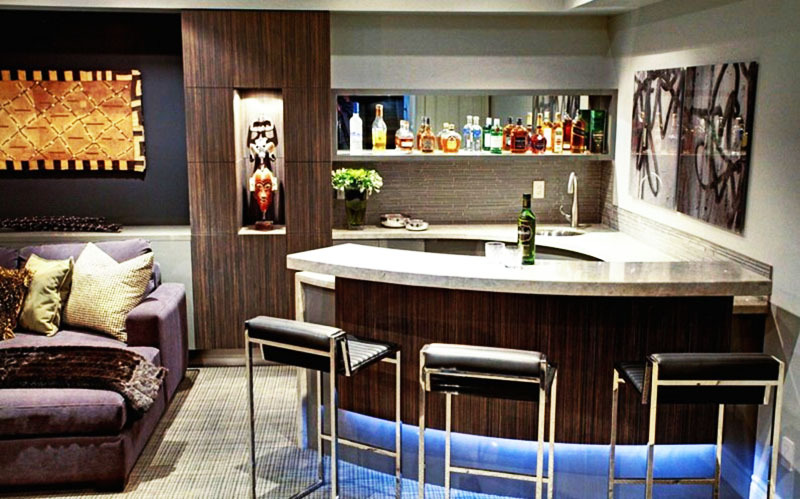
How to choose a bar stool for the kitchen
If there is a bar counter, then there must be appropriate special chairs, since the usual structures for a standard-sized seat will not work. The height of bar stools should be lower than the bar, but not more than 300 mm. It usually ranges from 700-850 mm. As a rule, manufacturers label their products:
- TH - chair 950 mm high for bar structures 1250-1350 mm;
- VN - a stool with a height of 850 mm for racks of 1100-1150 mm.
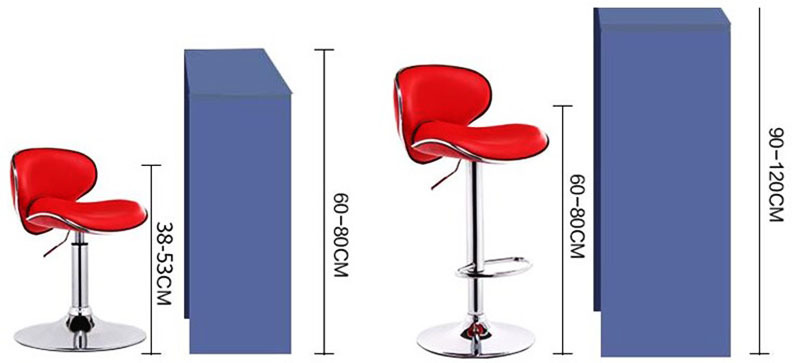
These chairs are mainly intended for catering establishments. Non-standard solutions are used for the home. They can be made of wood, metal or plastic, have a hard or soft seat, footrest, backrest and armrests. Also, bar stools are equipped with a height adjustment mechanism.
When choosing stools, you need to be guided by the size of the bar, style and personal preferences. If the design is used as a dining table, and not a short-term snack, then you should give preference to the most comfortable models.
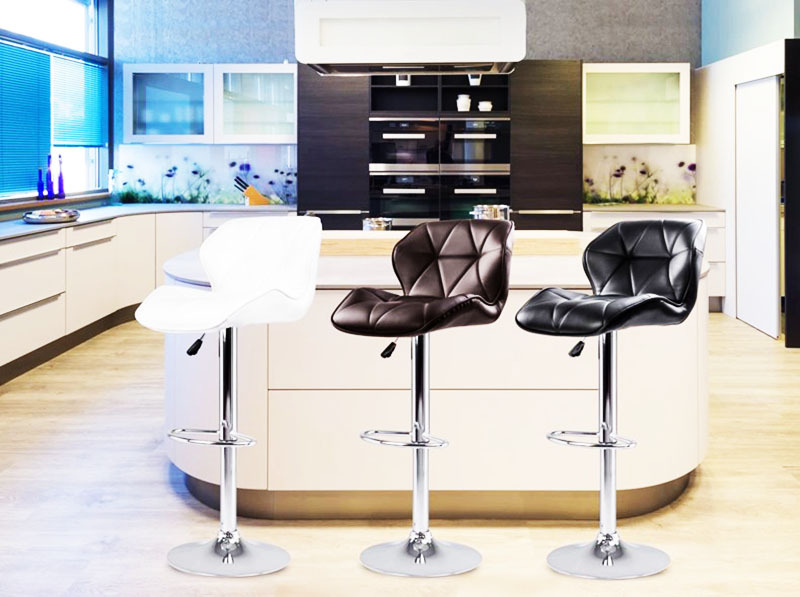
Which bar table and chairs to buy for the kitchen: expert advice
Catalogs of modern furniture manufacturers offer a fairly large assortment of all kinds of models of bar counters and chairs. They are sold as standalone units and also complete with kitchen sets. The latter option is more preferable, since it is quite difficult to ideally choose a rack with chairs for the existing furniture. The main thing when choosing is to pay attention to the stylistic solution, materials, dimensions, comfort and, of course, the manufacturer, on which the quality of the products largely depends.
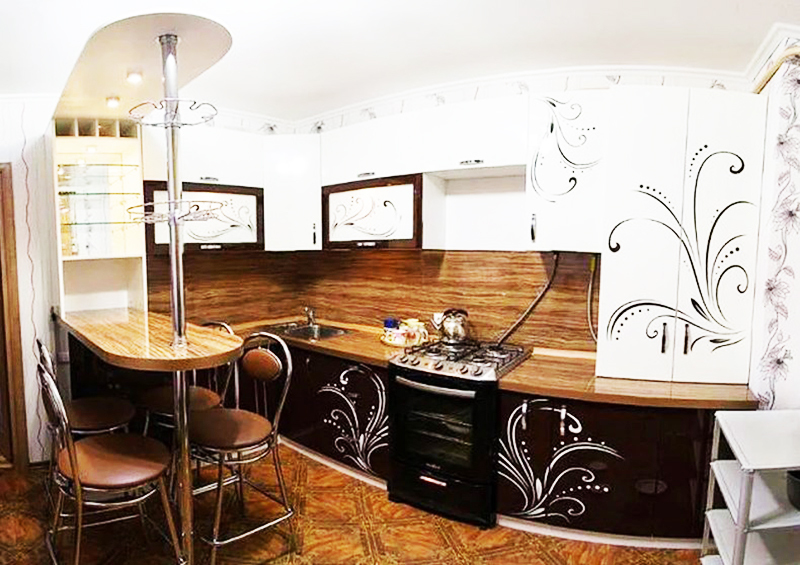
Ideas for the location of bar counters in the interior of the kitchen
The layout and area of the room dictates its own conditions for the placement of furniture, and bar counters are no exception. We offer you to get acquainted with interesting ideas for the location of these structures in the interior of the kitchen.
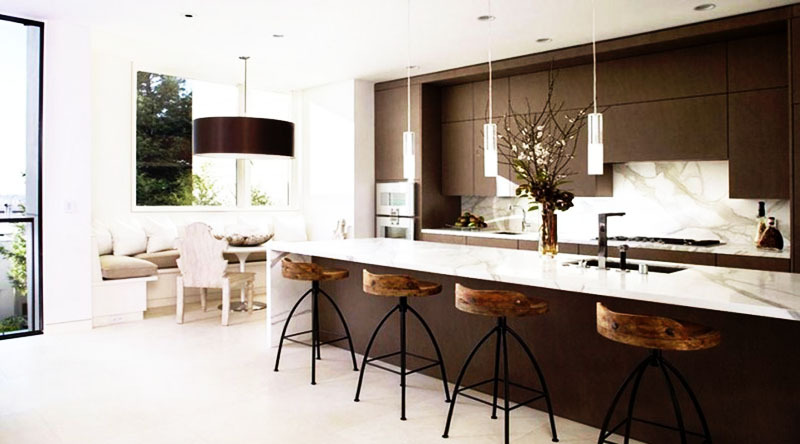
Bar counter between kitchen and living room with photo examples
A bar counter is a great way to zone a space. studio apartmentsseparating the kitchen area from the living room. This is a stylish and practical solution that can be used in interiors in any style.
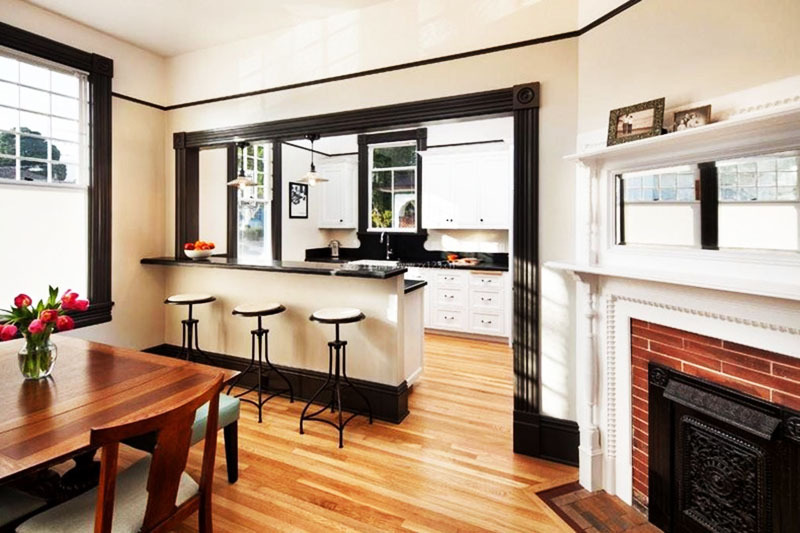
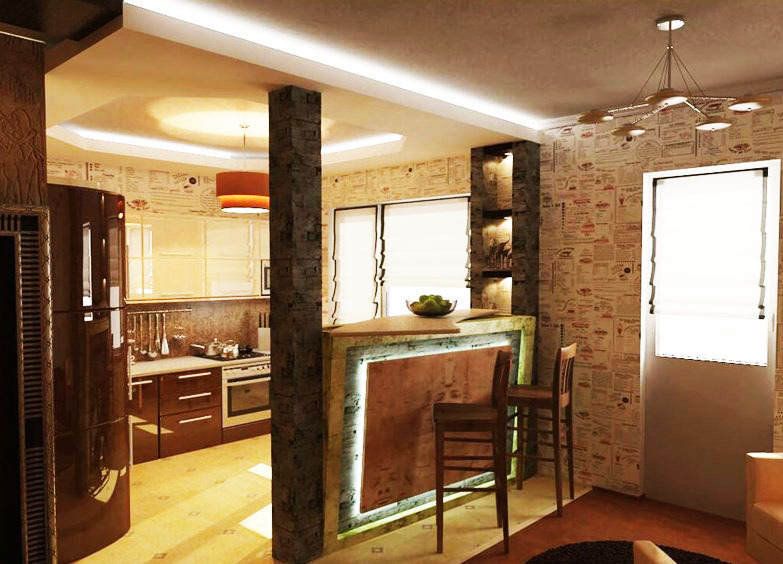
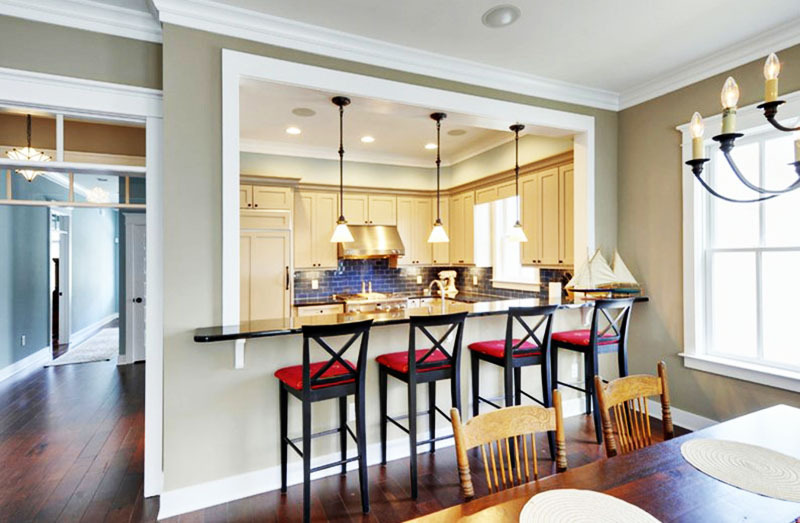
Design of corner kitchens with a bar counter with photos of interiors
Corner option placement of the corner bar allows you to expand the functionality of the kitchen set. The design can be separate or a continuation of the working surface. The corner post is more suitable for spacious rooms.
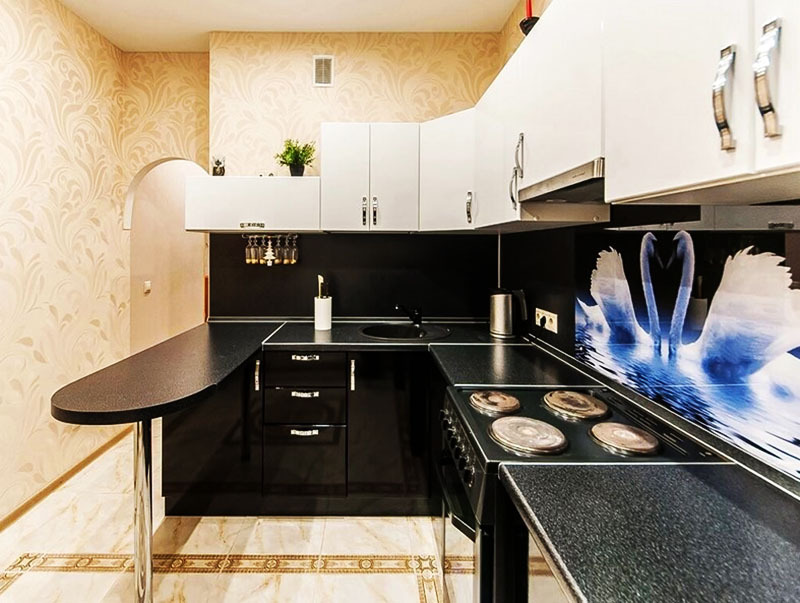
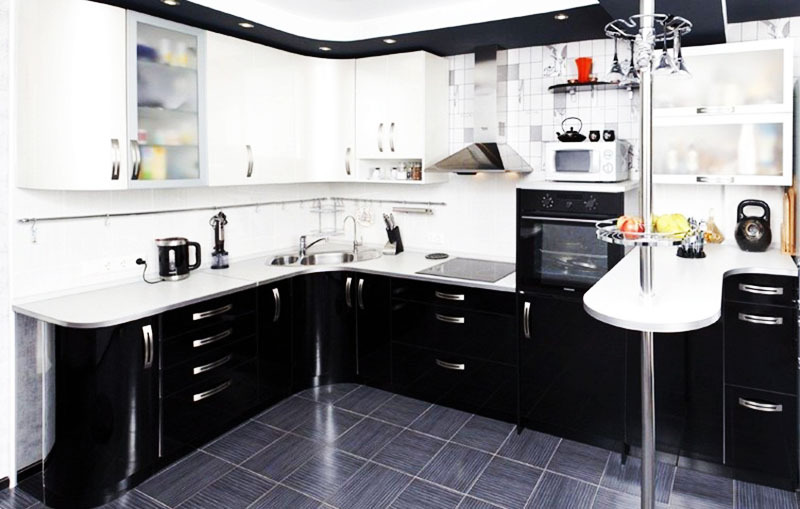
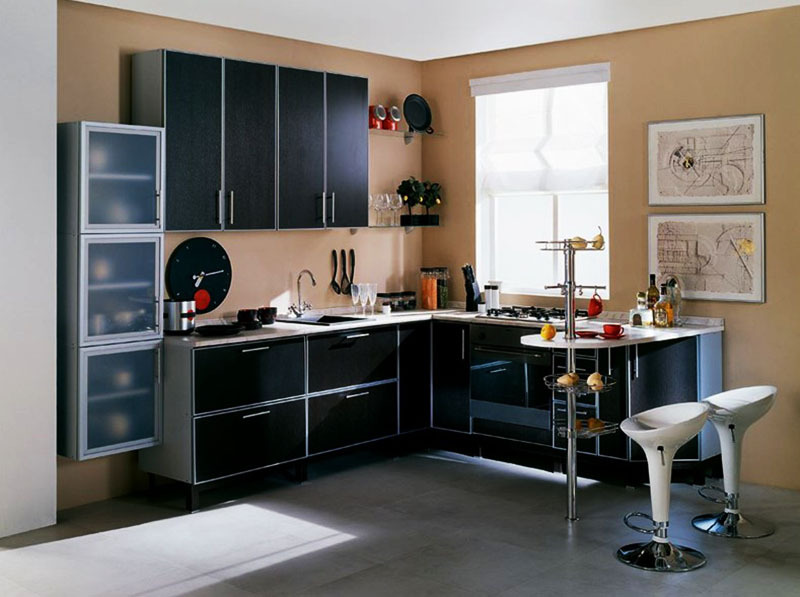
Related article:
Corner kitchen with bar: types and device, choice of forms and materials, various layouts and stylistic orientation, lighting and sizes of bar counters - in our publication.
Bar counter in the kitchen by the window with a photo in the interior
Modern designers are very fond of placing the bar counter by the window, often using the window sill as an extension of the countertop. This saves a lot of space and is suitable for narrow or square spaces in modern styles. This option is considered especially successful if you have a beautiful view from the window.
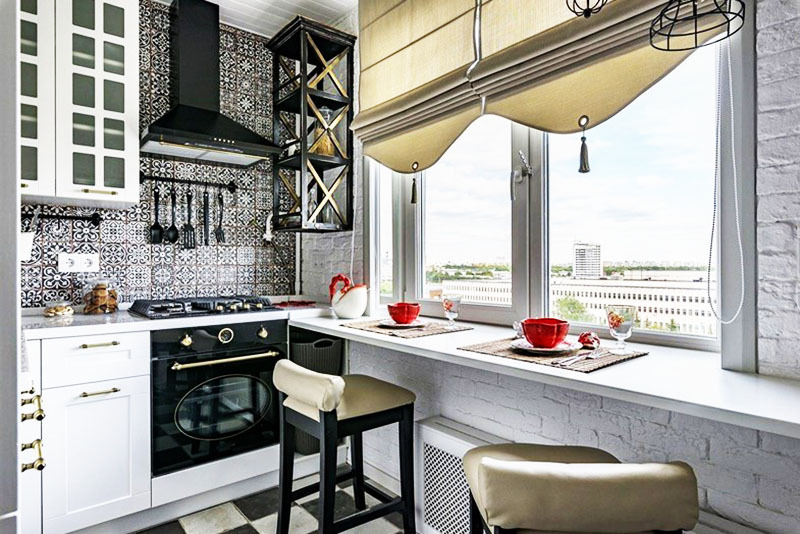
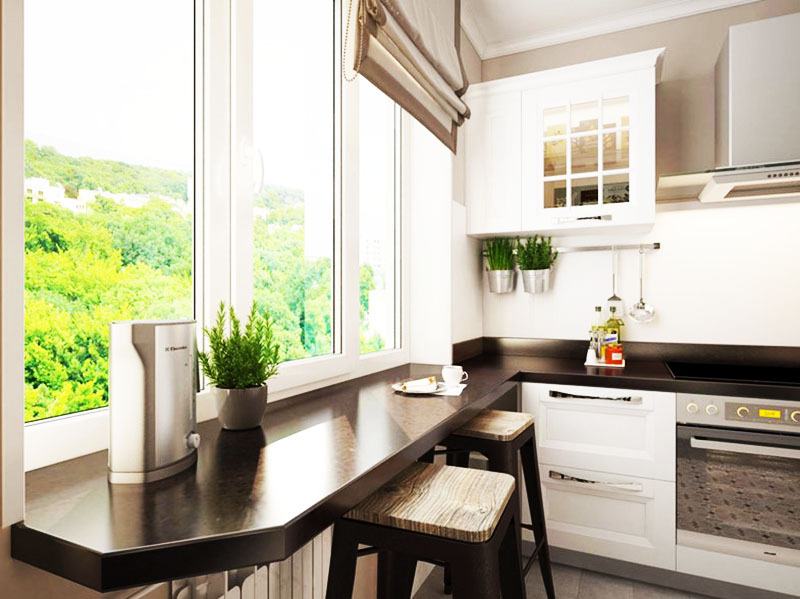
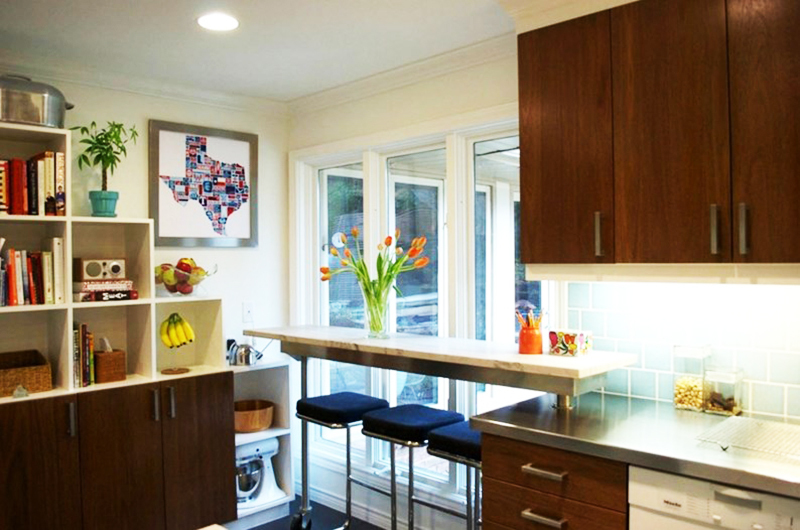
Bar counter in the kitchen against the wall
Installing bar counters on the kitchen wall is the best option for small spaces. As a rule, these are folding structures that allow you to save and more efficiently use free space.
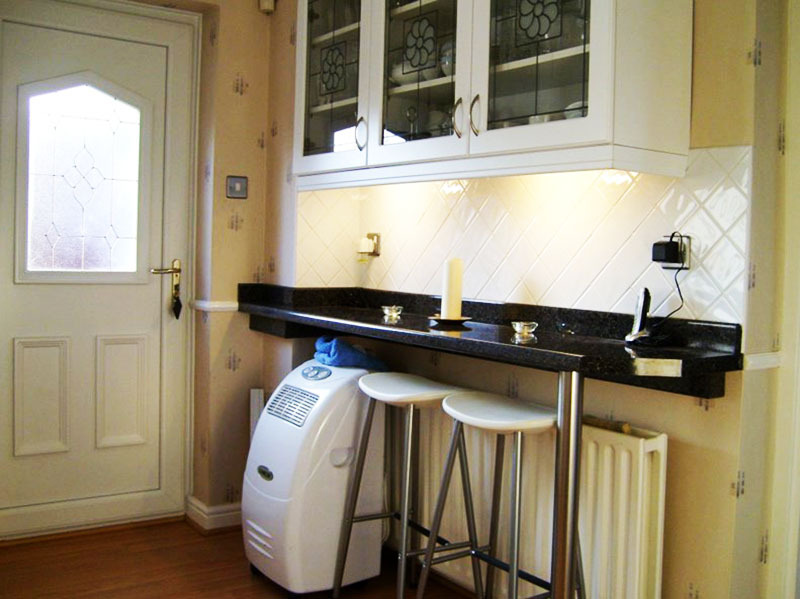
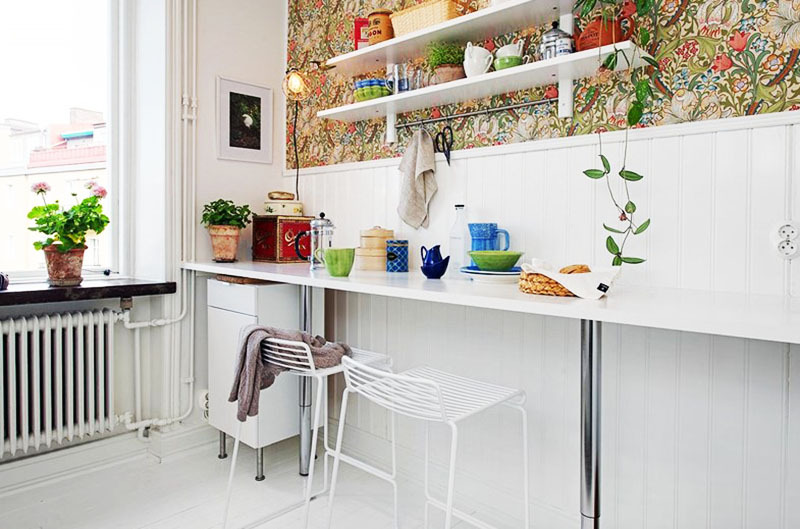
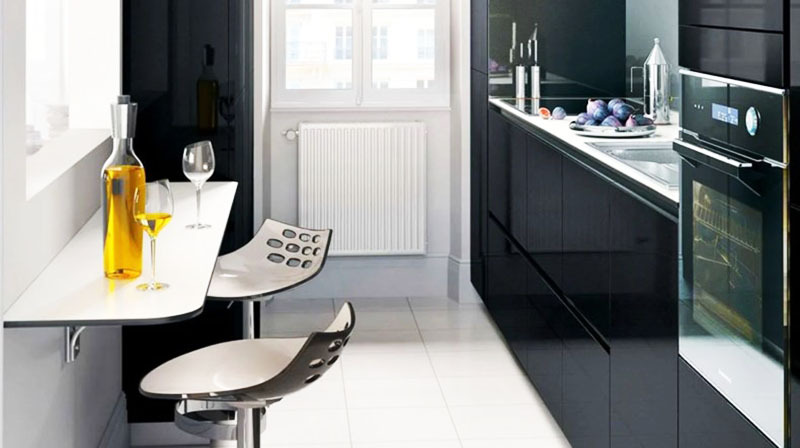
Bar counter in a small kitchen
It is difficult to place a full-fledged bar counter in a small kitchen, so designers resort to small structures with a height of about 900 mm. They are often used as an extension of the work surface of the headset, mounted on a wall or built into a window sill.
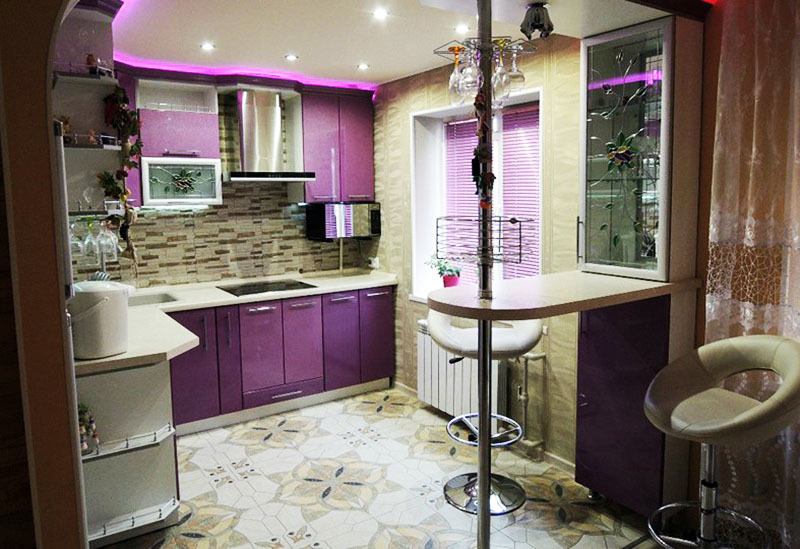
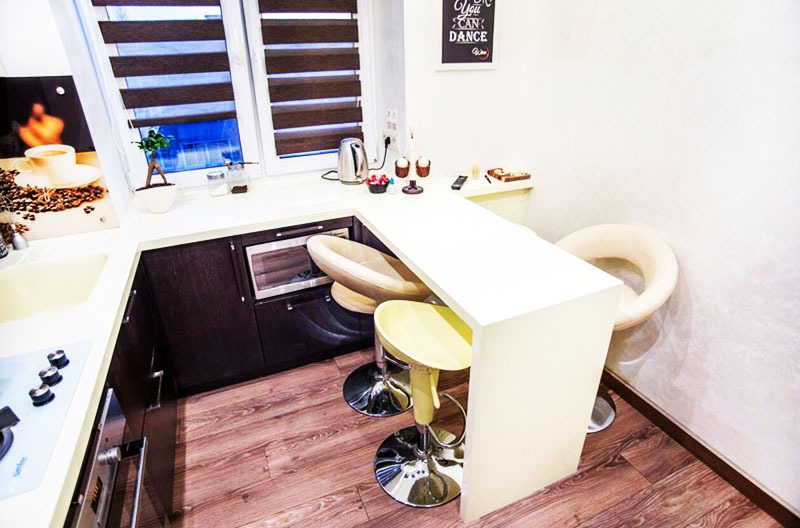

A few words in conclusion
The bar counter has long ceased to be an attribute of catering establishments and is firmly entrenched in the interiors of our houses. It is not only functional, but also a stylish piece of furniture that can decorate any kitchen. We hope that the information we provided was interesting and useful for you. Comment, rate, ask questions. We will definitely answer you.

